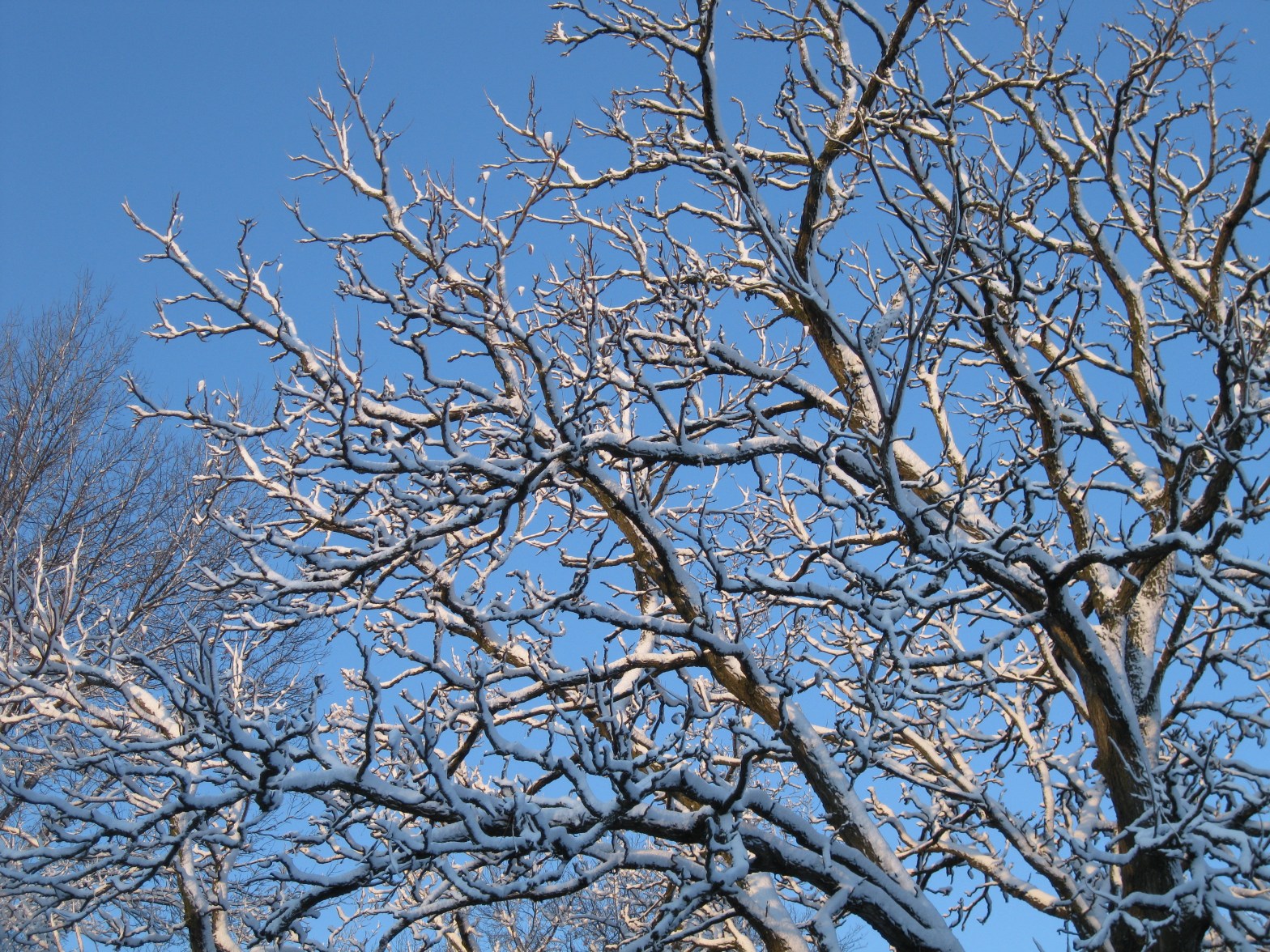By Emma Berger, Green Iowa AmeriCorps member
The Benefits of an Iowa Winter
Despite our general distaste towards Iowa’s harsh winters, they are essential to the functioning of other living organisms in our ecosystem. When Iowa trees experience dormancy, much like squirrels hibernate during the winter, it allows their roots to stay alive! If the outer functions of the tree are “shut off,” the nutrients leftover from photosynthesis can go to the roots instead. Winter is tough to weather, but our native trees, as well as some other species, are made to withstand the most brutal of winds and the deepest of snows. For example, the native-to-Iowa black willow can survive temperatures as cold as -50 degrees Fahrenheit!
Fruit trees that thrive in Iowa
| Crab Apple Tree | Seckel Pear Tree | Freedom Apple Tree |
| Patten Pear Tree (native) | Luscious Pear Tree | State Fair Apple Tree |
| Red Delicious Apple Tree (native) | Zestar Apple Tree | Snow Sweet Apple Tree |
| Paw Paw Tree | Black Cherry Tree | Common Persimmon Tree |
Apple trees are specifically important for Iowa; they largely contribute to local Iowa economies, and they are the state’s largest specialty crop!
Fun Fact! The Red Delicious Apple tree was discovered in the 1870’s in Peru, Iowa and was originally named the “Hawkeye!”

Soil is Life!
Trees require ample and healthy soil to be productive. A benefit to freezing Iowa winters is its guaranteed frost due to consistent freezing temperatures. When soil is frozen, it prevents the microbes in the soil from breaking down the precious organic matter that sets Iowa’s rich topsoil apart from any other soil in the country! However, the trend that has taken root over the past 2-3 years has been one of a cyclical warming-cooling pattern, which allows the organic matter to begin decomposition during the winter. Additionally, if temperatures rise above freezing, precipitation will switch from snow to rain, which can lead to soil erosion.

What Suffers?
On an ecosystem level, these irregular freezing patterns can impact non-native and native species competition, land-use, landscape fragmentation, and pest/disease disturbances. Specifically, Iowa fruit and nut tree roots require a consistent chill to have a productive spring. Fruit trees always run the risk of sprouting fruit during a warm winter period, which potentially prevents the tree from producing fruit come spring. Chestnut trees are among those trees most vulnerable to freezing-thawing cycles. This is because water is trapped in the soil during warmer and wetter periods, which then freezes when the temperatures drop. When the “thaw” portion of the cycle rolls around, all of this water melts and saturates the soil again. The abundance of moisture causes the chestnut trees to either not produce come spring, or in worst case scenarios, the tree can die off.

Tree roots can also undergo a phenomenon called frost heaving, where during warmer days the soil thaws out due to mild temperatures, but at night the temperatures drop and the soil freezes. As this cycle repeats itself over time, the roots can be damaged as the soil elevates over time. The tree itself can experience sun scald, which is a vertical crack in the tree’s trunk resulting from unusually warm winter temperatures. This phenomenon usually results in thin-barked trees.

What can tree growers do?
Applying mulch around the tree provides insulation for its roots, as well as preventing frost heaving. Spreading a 3-inch layer of mulch around the tree also prevents soil erosion during warmer periods. One possible strategy is giving a tree extra water the night before falling temperatures are set to occur. Another option is covering tree branches with a burlap sack to prevent uptake of water from the roots when the branches are faced with extreme cold and wind. To prevent sun-scald specifically, wrapping your tree is the best possible solution!

What does the future hold?
As Iowa winters continue to experience circular freezing/thawing cycles, as opposed to the characteristic deep freeze, trees and other vital parts of the ecosystem will have to adapt. The forest composition could shift as some species of trees will move northward if they cannot adapt to these cyclical patterns. While it is disheartening enough that trees are being displaced, there exists a butterfly effect of potential problems if enough tree species are removed. If there is a decrease in trees, this could pose a threat of soil erosion and flooding for nearby water resources.


We recommend piling leaves & chips around trees that are in wet areas, this will help prevent the wet areas from freezing too hard.